20 Beautiful Types Of Birds in Kansas
↓ Continue Reading To See This Amazing Video
Kansas, the “Sunflower State,” is home to an incredible variety of avian species that showcase the state’s natural beauty. Here are 20 of the most beautiful birds in Kansas, each with unique characteristics!
1. Pileated Woodpecker (Dryocopus pileatus)
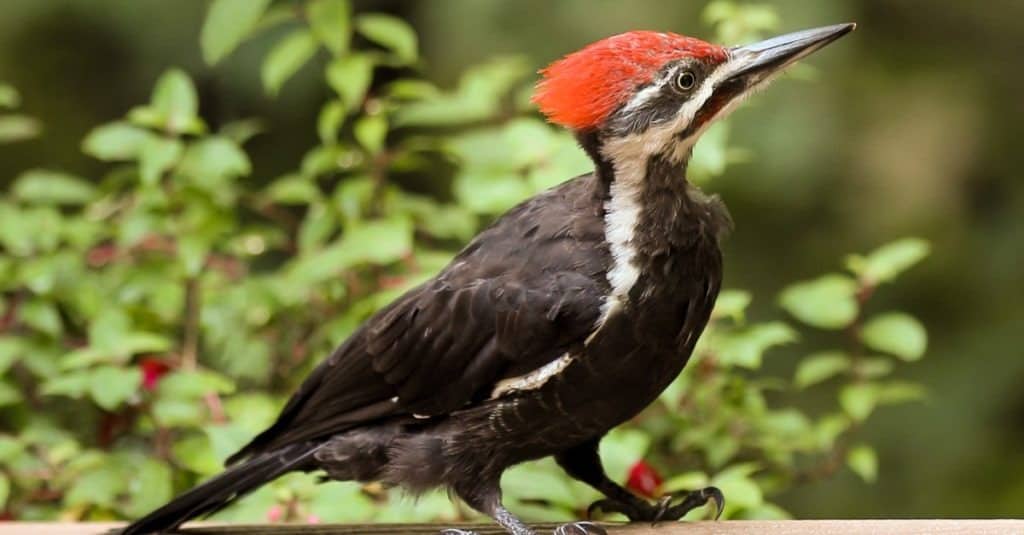
The pileated woodpecker is a notable bird species. It sports black feathers with distinctive white stripes on its neck and a striking red crest atop its head. A common sight in the state’s forests, these woodpeckers make a characteristic tapping sound as they search for their primary prey, carpenter ants, by pecking at fallen logs and dead trees.
These woodpeckers compete with other bird species for nesting cavities in the area. Residents spot them in backyards during winter, especially near bird feeders filled with suet.
2. American Robin (Turdus migratorius)
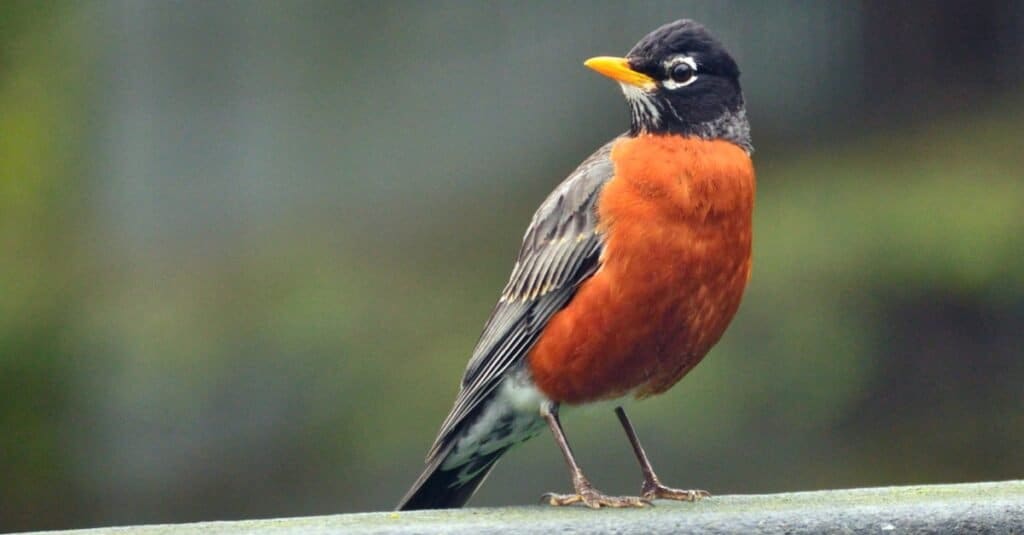
©iStock.com/PhotosByMSA
In Kansas, the American robin is a common and recognizable bird species known for its vibrant rusty red breast and dark back and head. Spotting these birds is easy, with their distinctive white throat and white splotches around their eyes. Females tend to appear paler in comparison to males.
The American robin is a versatile bird that inhabits various habitats, ranging from tundra to forests. However, they can also adapt to urban environments and are common in backyards. Despite their abundance, these birds are not frequent visitors to bird feeders because their diet primarily consists of invertebrates.
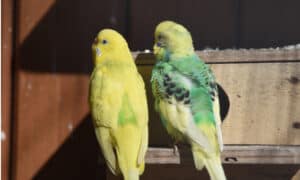
In the spring, the American robin’s clear whistle is a familiar sound in many areas.
3. Eastern Bluebird (Sialia Sialis)
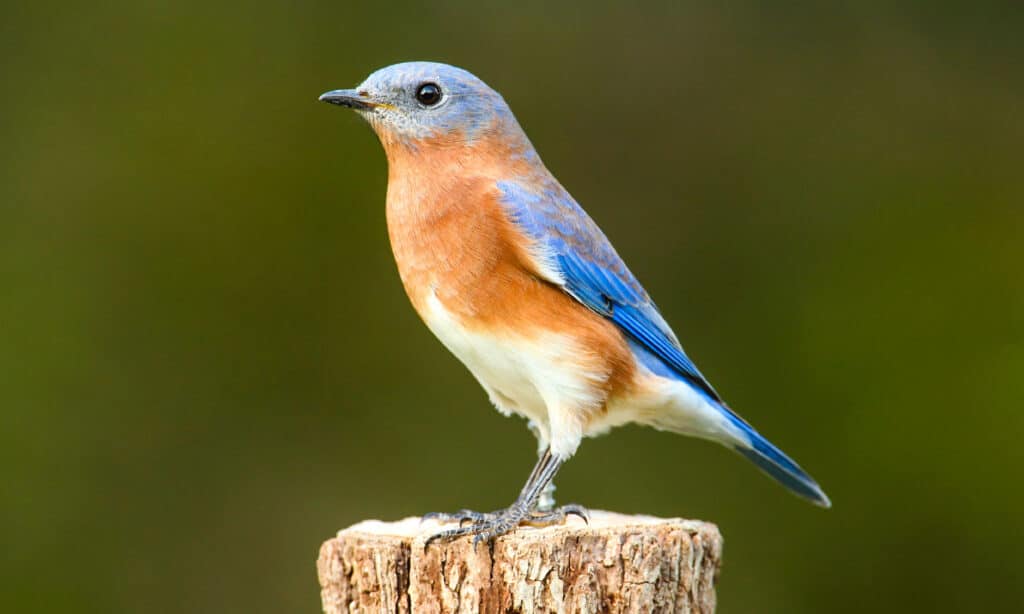
©Steve Byland/Shutterstock.com
In Kansas, the eastern bluebird lives throughout various counties all year round. The males display a stunning sky-blue head and a rusty chest, whereas the females have paler bodies with grayish-black feathers and blue wings and tail feathers.
The eastern bluebird prefers living in meadows that are surrounded by trees, which provides them with an ideal location for building their nests. These birds often perch on low branches or wires as they search for prey on the ground.
Their diet primarily consists of insects found on the ground, including caterpillars, beetles, spiders, and crickets. However, they will flock to feeders stocked with mealworms.
4. House Sparrow (Passer domesticus)
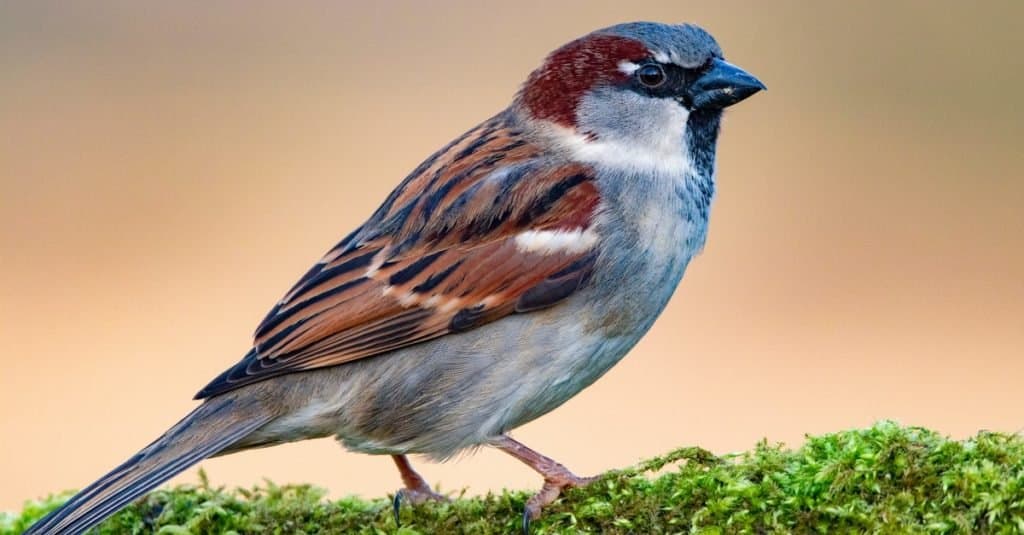
©Craig Howman/Shutterstock.com
Male house sparrows exhibit distinctive physical features, such as gray crowns, black bibs, and chestnuts on their neck and face, while their backs are mainly brown with black streaks. Meanwhile, females can be easily identified by the tan line that extends behind their eye and their overall dull brown coloration.
Originally from the Middle East, house sparrows have become an invasive species and are now one of the most widespread and abundant birds in Kansas. Unlike many other bird species, house sparrows prefer grains and frequently feed on bread and popcorn at sporting events, amusement parks, and other similar settings.
5. Northern Cardinal (Cardinalis cardinalis)
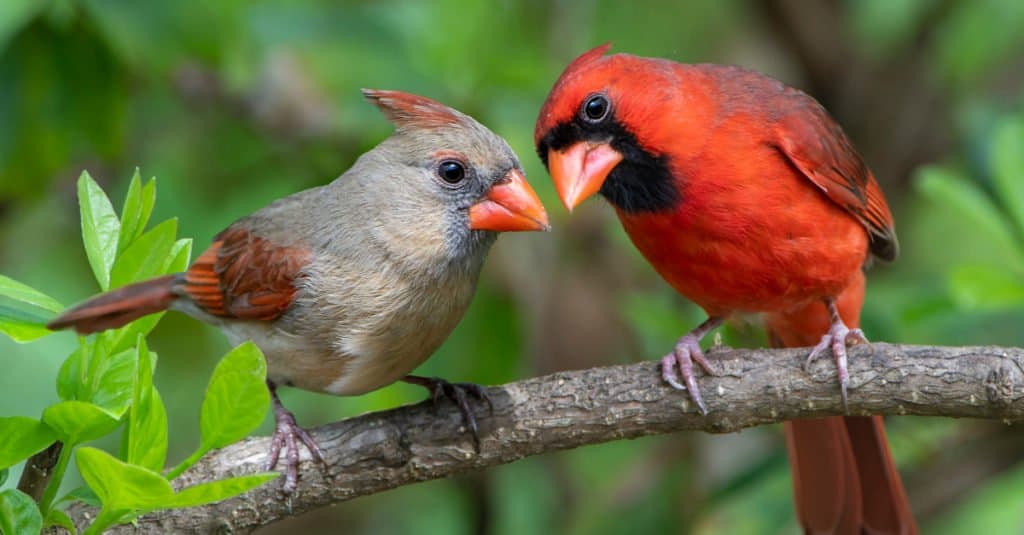
©Bonnie Taylor Barry/Shutterstock.com
The northern cardinal is a prominent songbird that lives across all counties of Kansas. The male, with its striking red plumage and black feathers surrounding its bill, is easily recognizable. Females are browner and display less red.
For novice birdwatchers, the northern cardinal is often one of the first avian species they encounter and correctly identify. This beautiful bird is a common sight in residential backyards, especially ones with platform feeders.
Fruit, insects, and seeds make up the primary diet of the northern cardinal. Interestingly, males display aggressive behavior, often attacking their own reflections in glass windows!
6. American Crow (Corvus brachyrhynchos)
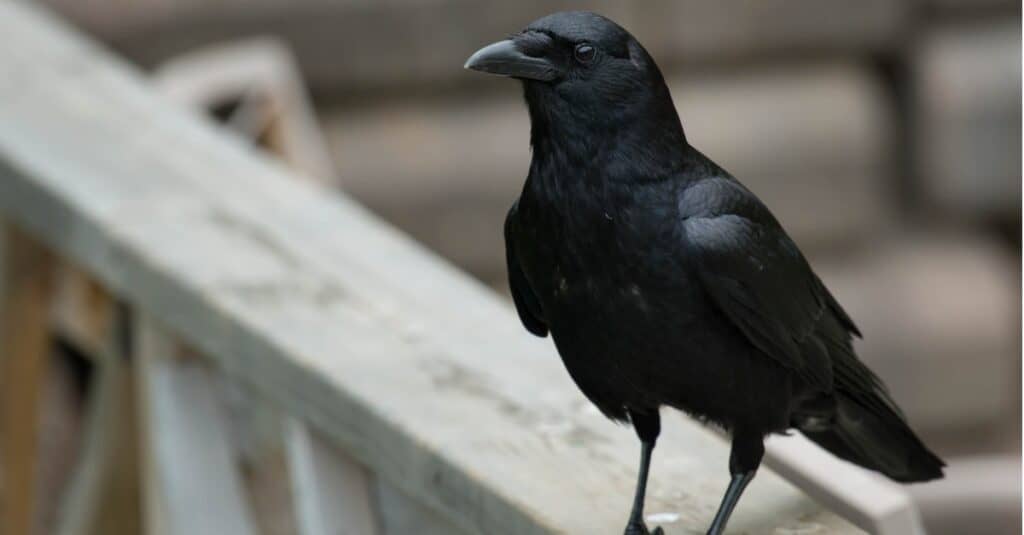
©iStock.com/PaulReevesPhotography
Kansas is home to a versatile black bird with a striking, iridescent appearance. These birds are called American crows and thrive in nearly every type of habitat in the state.
With their penchant for ground-feeding, American crows have a diverse diet that includes earthworms, fruit, seeds, garbage, carrion, and even pilfered nestlings. They are sociable creatures and often hangout in groups.
Not only are American crows known for their unique flight style and adaptability, but they are also considered one of the most intelligent avian species in Kansas.
7. Hepatic Tanager (Piranga flava)
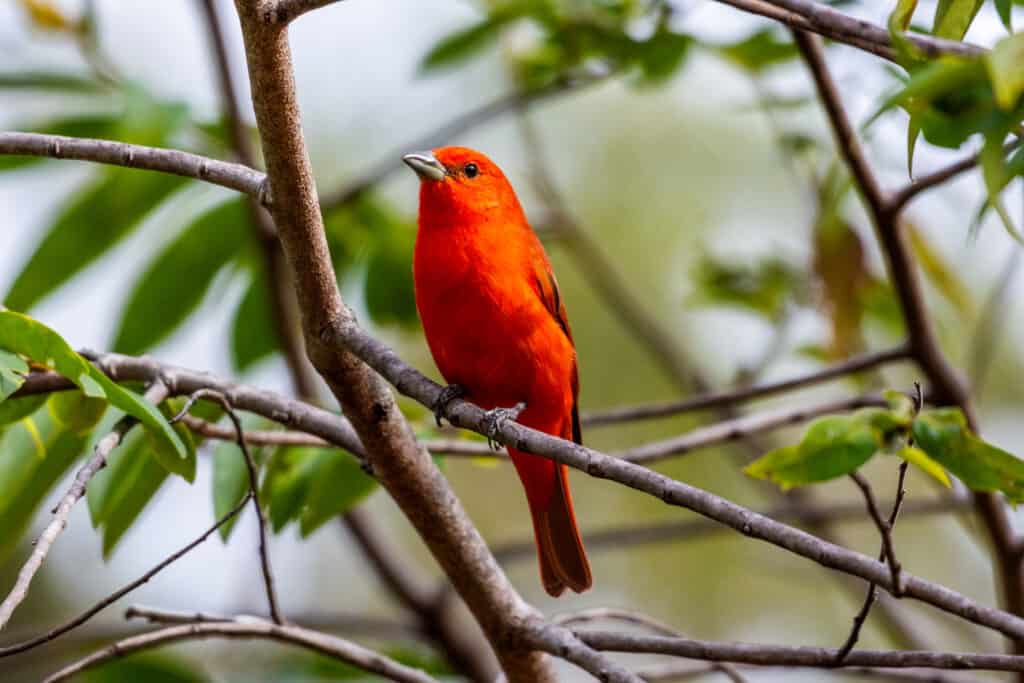
©Rodrigo S Coelho/Shutterstock.com
The hepatic tanager is a species of a songbird with a robust physique, powerful wings, sturdy tail, and strong legs. Males have a red-brick upper body with grayish feathers and reddish underparts, while females have an olive-yellow coloration.
Their diet consists mainly of insects, and they forage by hopping around vegetation or catching flying insects mid-air.
The males establish territories spanning an area of three acres, which they fiercely protect against intruders. Occasionally, one can spot these birds foraging in the company of other birds, either in pairs or small groups.
8. Song Sparrow (Melospiza melodia)
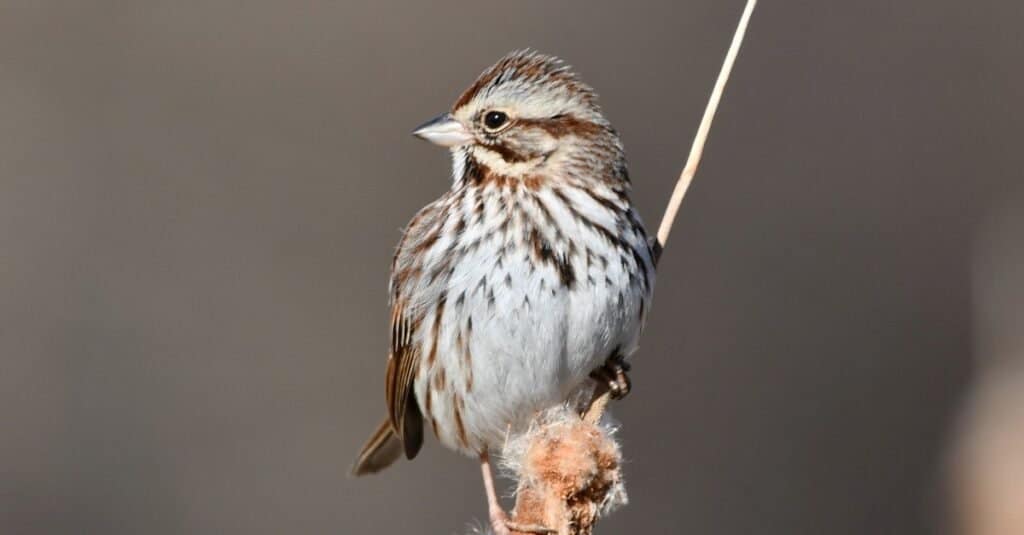
©iStock.com/Carol Hamilton
An easier sparrow species to identify than others, song sparrows are common in Kansas. They often nest on the ground in open, wet, and bushy areas. They feed on insects in the summer and fruits and seeds year-round.
This bird has brown streaks that come together at a central point on its chest. Their head is adorned with a brown crown featuring a grey stripe. Their back and body display a rusty-brown color with streaks of grey.
The diverse range of songs this species sings gives it its name.
9. Indigo Bunting (Passerina cyanea)
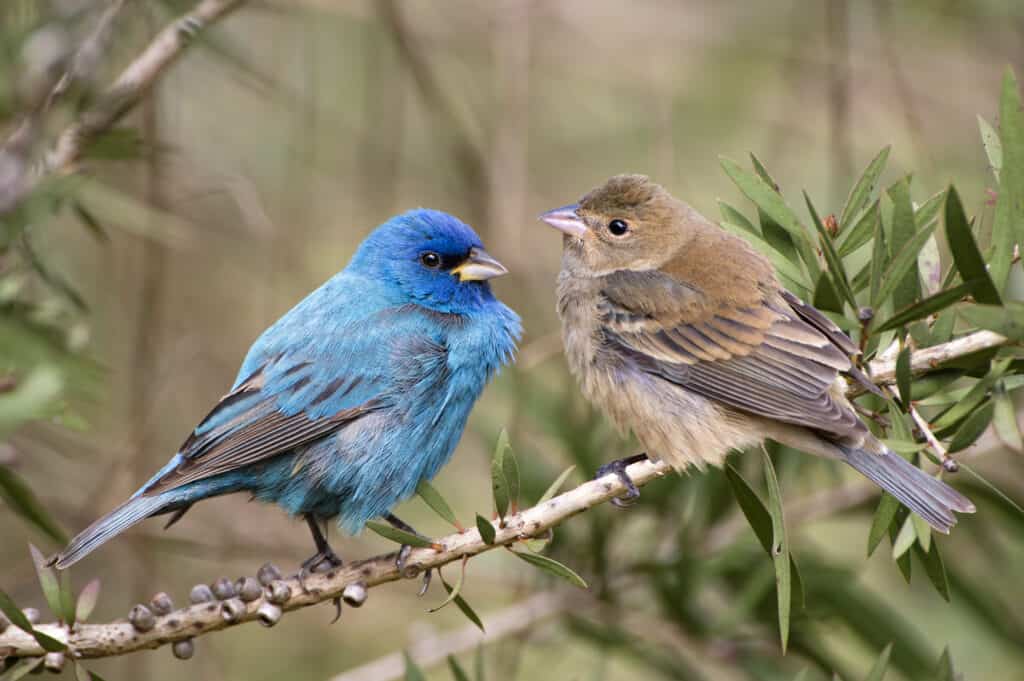
©Bonnie Taylor Barry/Shutterstock.com
Indigo buntings live in the eastern parts of Kansas from April to October, both in wooded areas and urban settings.
The male has vibrant blue feathers, while its head is a darker hue. In contrast, the female has brownish plumage with subtle blue undertones on its chest and wing tips.
They search for small seeds, such as those from thistles and dandelions, in fields, bushy canyons, and grasslands. As a benefit, they also consume brown-tail moth caterpillars, which can be hazardous to human respiratory health.
10. European Starling (Sturnus vulgaris)
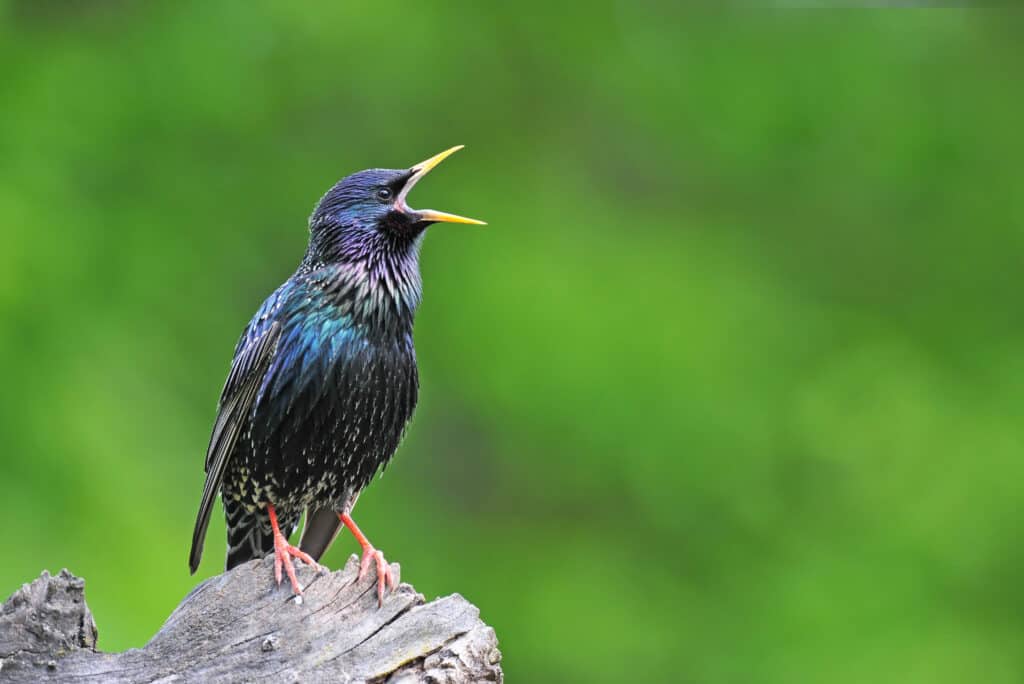
©Soru Epotok/Shutterstock.com
The European starling, a prevalent bird in Kansas, is an invasive species with a striking black plumage and adaptability to any environment. They have short tails and long, slender beaks with a green-purple tint during the breeding season.
These birds thrive on non-mountainous terrain and are omnivorous, eating almost anything.
While they are fun to watch in small numbers, they can be aggressive in massive flocks and may chase away other birds and spoil outdoor gatherings.
11. Belted Kingfisher (Megaceryle alcyon)
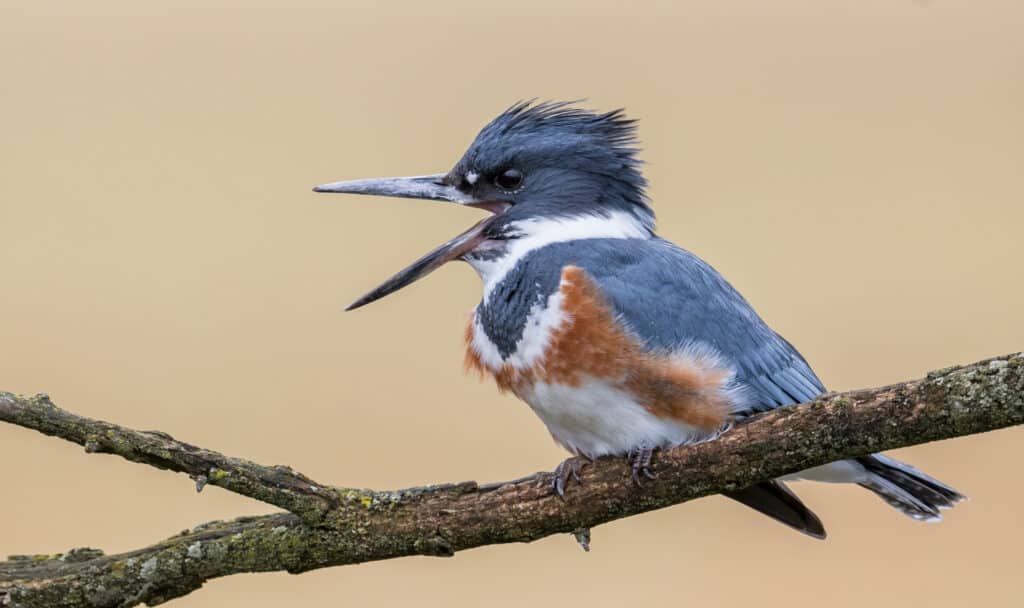
©Harry Collins Photography/Shutterstock.com
Near Kansas’ waterways, locals hear the belted kingfisher‘s distinct call way before it comes into view.
In contrast to most bird species, the females have a more unique color pattern than the males. Their plumage is gray blue with white spots and a rusty band across the belly, while the males are lighter in color.
This bird lives near streams and relies heavily on fish as its primary food source. Interestingly, young belted kingfishers have an acidic stomach that allows them to digest whole fish. However, they lose this ability as they mature.
12. Mourning Dove (Zenaida macroura)
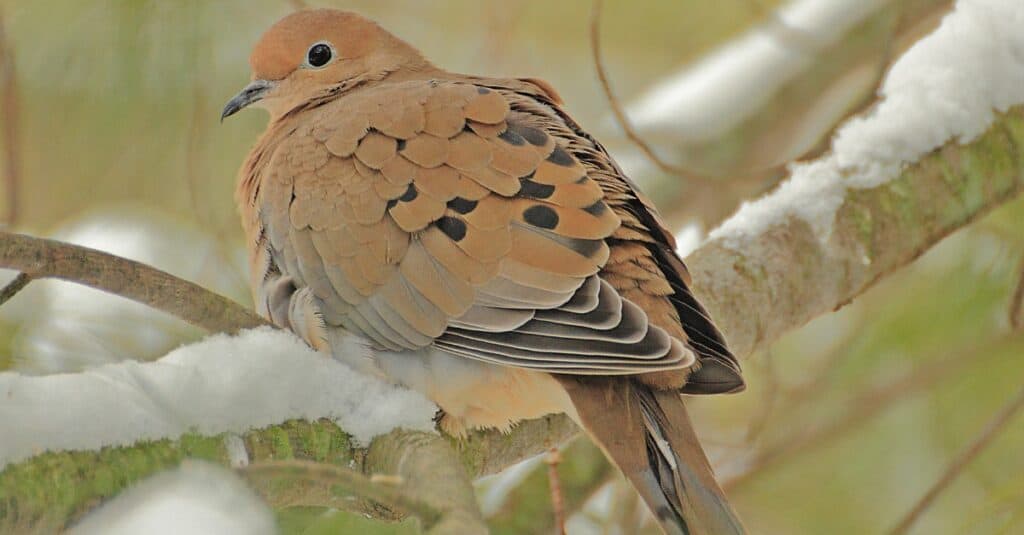
©iStock.com/gregvandeleest
In Kansas, you can often spot the familiar mourning dove, with mostly grayish feathers and large black spots on the wings. Keep an eye out for its black bill, beautiful blue eye-ring, and pinkish legs. This dove is a common sight and easy to recognize.
You can find them perched on trees or telephone wires or foraging on the ground for their favorite foods, which include shelled sunflower seeds, millet, cracked corn, safflower, and Nyjer seeds.
They are often in pairs, cuddling and exhibiting affection towards each other.
13. Anna’s Hummingbird (Calypte Anna)
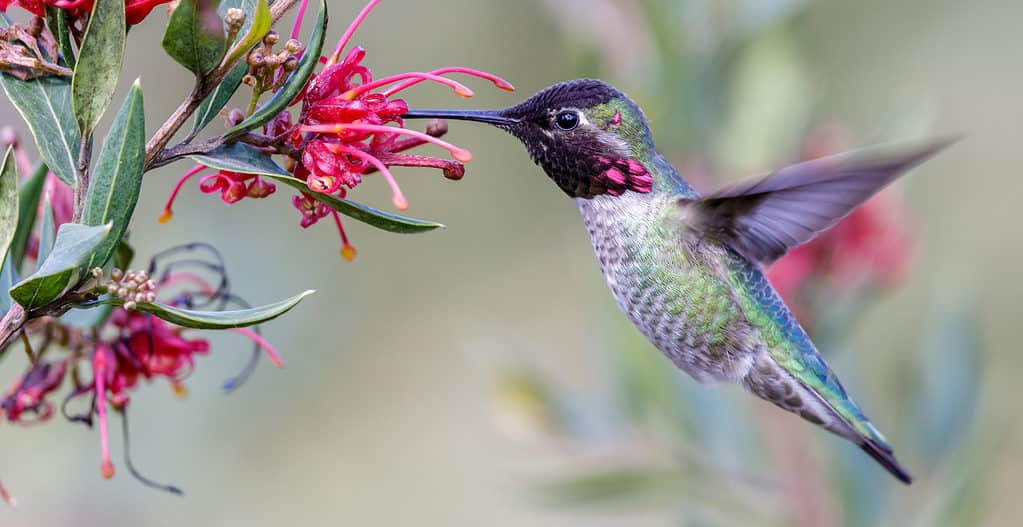
©yhelfman/Shutterstock.com
The Anna’s hummingbird boasts a striking bronze-green back and a brilliant crimson-red crown that appears lighter in low-light conditions. The females of the species are smaller and have a much lighter appearance.
These lively birds have loud vocalizations, particularly during the breeding season.
Anna’s hummingbirds live in a wide range of habitats, including city parks, gardens, and woodlands. These tiny birds mostly feed on nectar from various plants.
14. Blue Jay (Cyanocitta cristata)
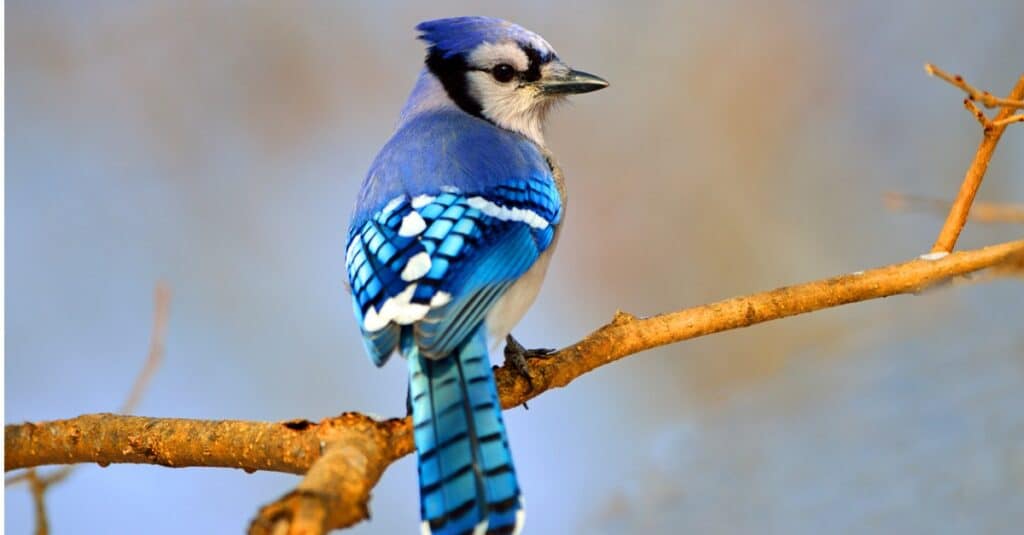
©iStock.com/BrianEKushner
Blue jay is a fascinating bird species known for its striking appearance and high level of intelligence. Its beautiful blue feathers are adorned with black bars, and it has a white belly. The bird’s head is distinctive, featuring a blue crest on top and a black necklace.
This species is one of the noisier birds in Kansas. Blue jays inhabit oak and pine woods, suburban gardens, and towns, where they thrive in diverse habitats.
Blue jays are omnivores, and they derive 75{95b18eb6fc4f42efd0d92738dfc3fb79fde21da267a711ecdf0381147c27bb86} of their diet from vegetable matter, with an even higher percentage in winter.
15. American Goldfinch (Spinus tristis)
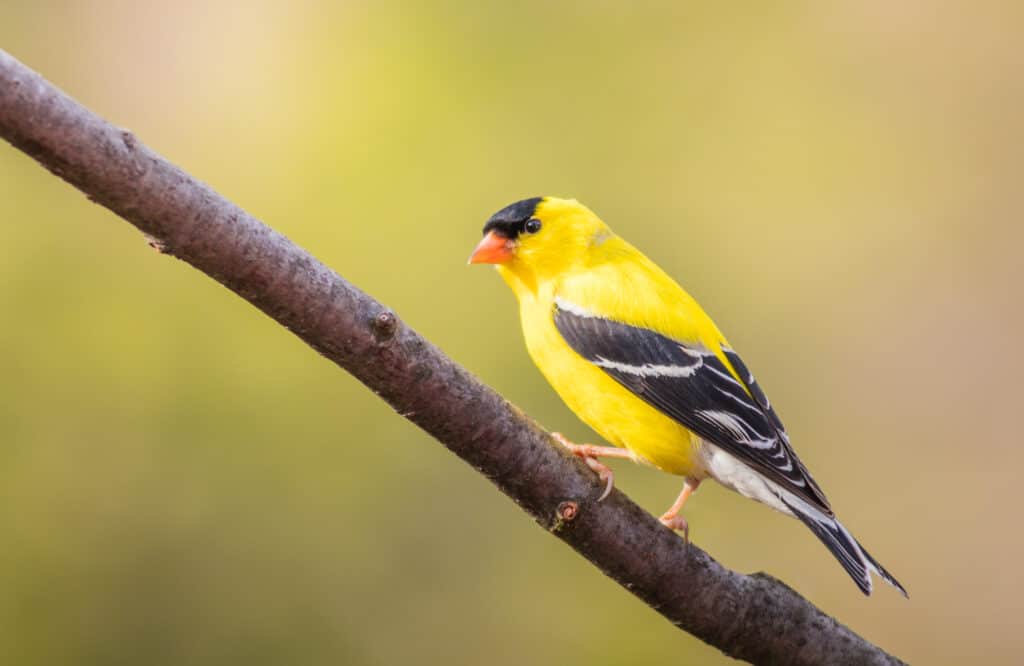
©Rabbitti/Shutterstock.com
The best nesting populations of the American goldfinch are in the eastern quarter of the state.
Males have a yellow and black forehead and black wings with white markings, while the female is olive and yellow. Known for its acrobatic flying, the American goldfinch inhabits overgrown fields, parks, and suburbs, feeding on seeds and some insects.
This brightly colored bird is a common sight for those who have bird feeders.
16. Tufted Titmouse (Baeolophus bicolor)
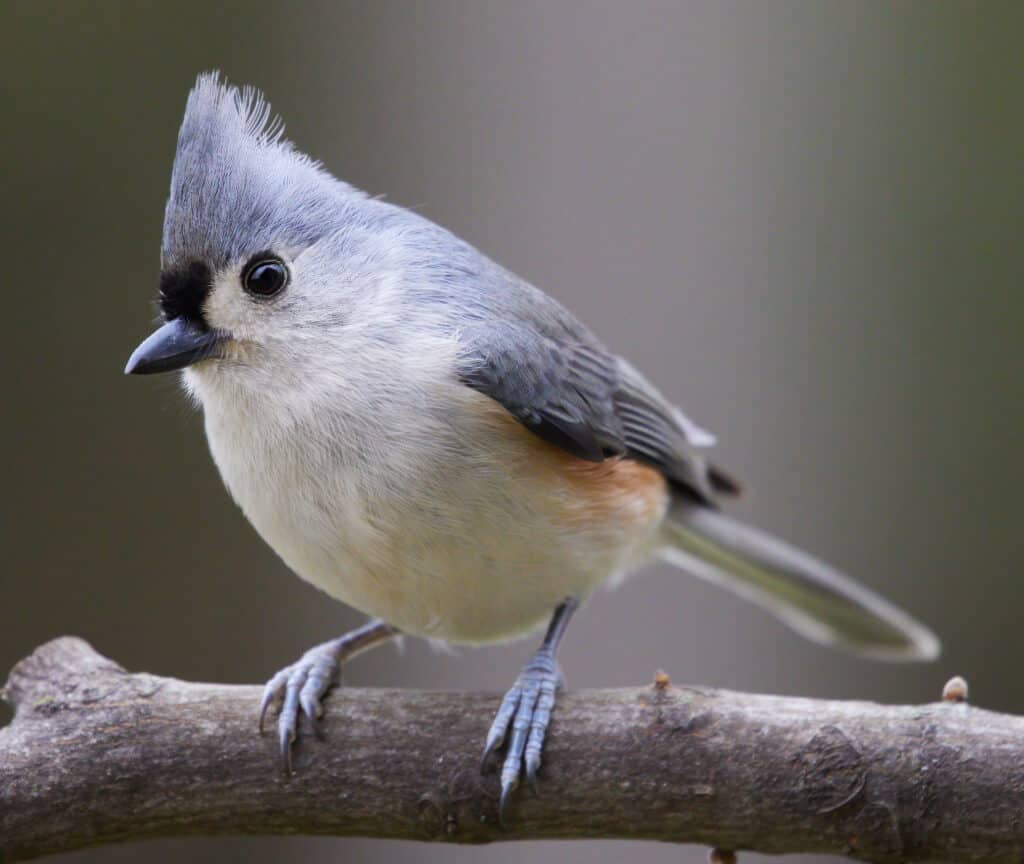
©Rich Waite/Shutterstock.com
The tufted titmouse boasts a striking appearance with its grayish feathers, white underparts, peach-colored sides, and a distinctive crest atop its head.
These agile birds are a common sight in deciduous forests, backyards, and city parks throughout eastern Kansas. Bird feeders in the region see frequent visits from these acrobatic creatures, particularly during the winter season. Their preferred diet consists mainly of sunflower seeds, but they also eat safflower seeds, suet, and peanuts.
17. Western Meadowlark (Sturnella neglecta)
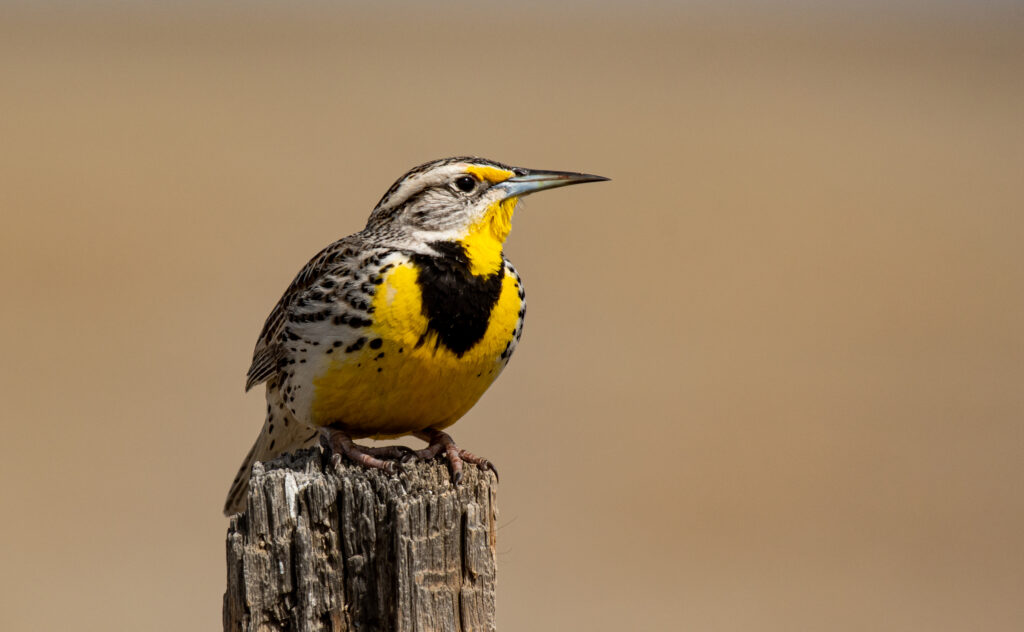
©Kerry Hargrove/Shutterstock.com
The western meadowlark is a beautiful bird with a unique, flute-like melody that drifts through open fields with low vegetation. Its bright yellow plumage, patterned upper, and distinctive black V mark on the chest make it easy to spot.
During different seasons, western meadowlark’s dietary patterns vary. In the summer, it mostly feeds on insects, while in the winter, it switches to seeds. This bird will also consume other birds’ eggs.
The natural habitat of western meadowlarks consists of open grasslands, prairies, and meadows, as well as certain agricultural fields.
18. Downy Woodpecker (Picoides pubescens)
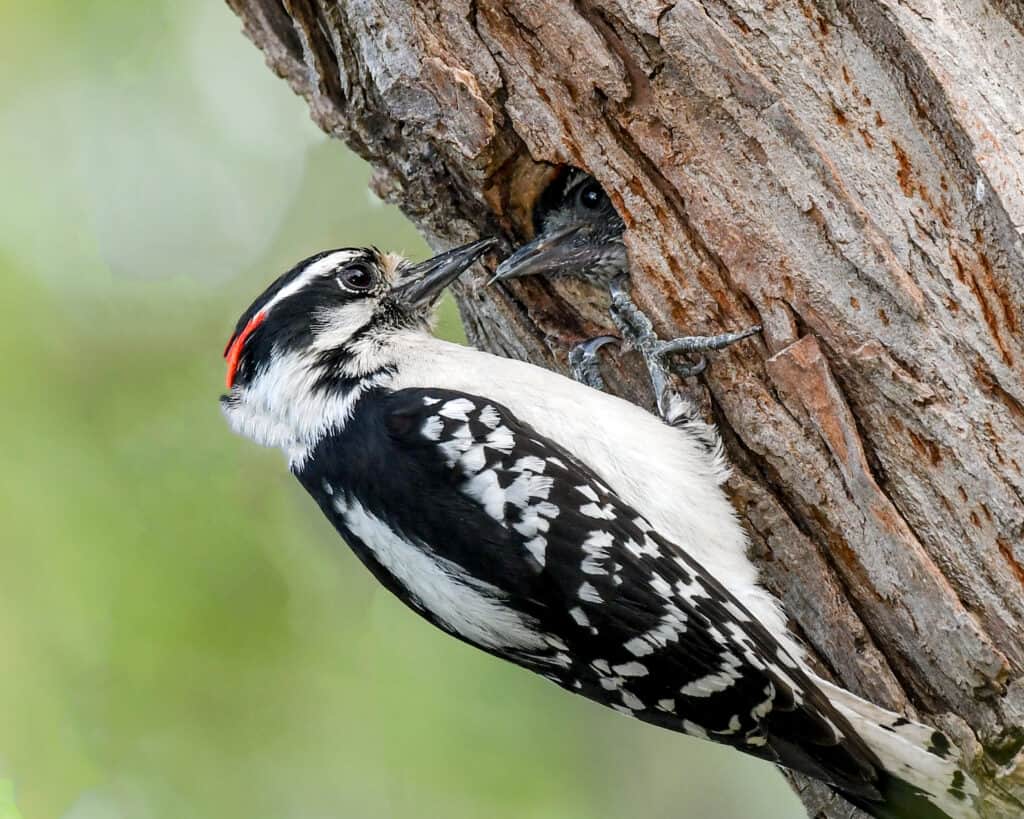
©Brent Barnes/Shutterstock.com
The downy woodpecker is a small bird with a black body, white belly and back, and a checkered head. Males have a reddish patch on their heads.
The downy woodpecker is usually in open woodlands, orchards, city parks, vacant lots, and backyards. It prefers suet feeders but will also eat black oil sunflower seeds, peanuts, and millet. Additinally, this bird is more likely to visit backyard feeders than any other woodpecker species in Kansas.
19. Baltimore Oriole (Icterus galbula)
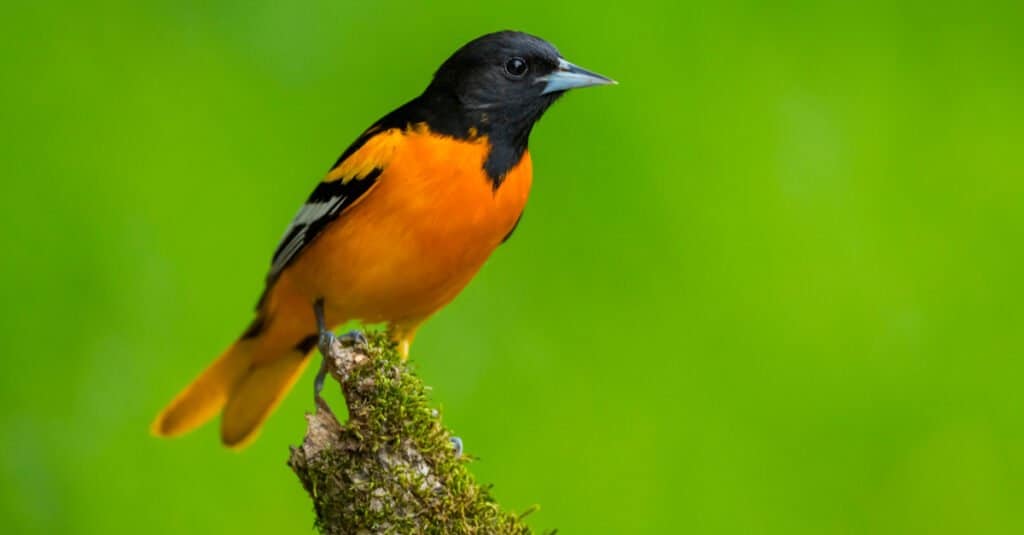
©Agami Photo Agency/Shutterstock.com
The Baltimore oriole’s whistling is a telltale sign of spring in Kansas. The males have black and orange plumage with white wing bars, making them a visually appealing species. Females have a subtler appearance.
These birds prefer open woodlands, riverbanks, swamps, and forest edges, where they feed on fruits and nectar. Luckily, attracting Baltimore orioles to bird feeders is simple, provided you offer these foods.
20. Purple Martin (Progne subis)

©iStock.com/KennShapiro
A member of the swallow family, the purple martin is common in Kansas and has a unique preference for man-made nests. It boasts a bluish-purple feathering with wings of a brownish-black hue.
Purple martins are social birds that nest together. They tend to hover over urban areas, parks, fields, and other open spaces in search of prey.
Their diet comprises a diverse range of flying insects, including many species of wasps and winged ants, as well as some bees.


/cloudfront-ap-southeast-2.images.arcpublishing.com/nzme/6LNWD6GT2VARDOOSGYRZR3SRGU.jpg)





